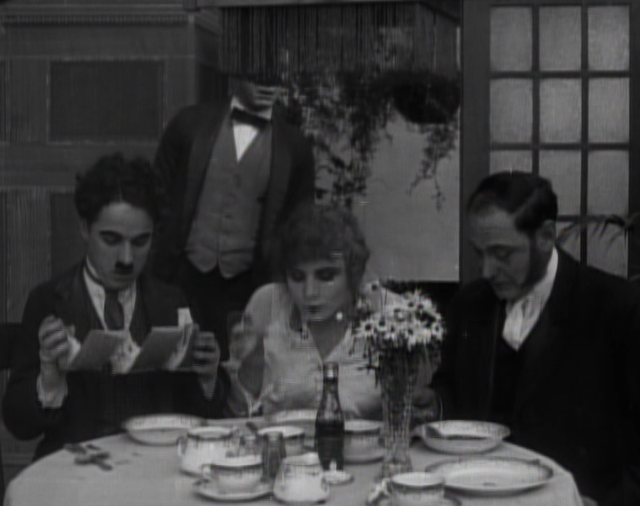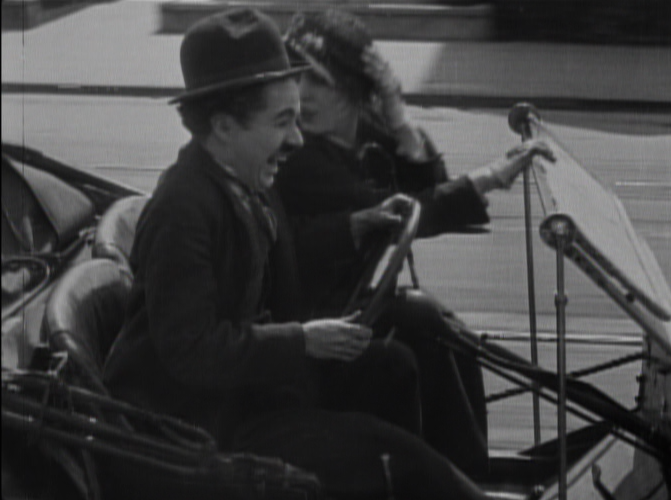![]() |
Back Row: Albin Kesley Schoepf (Dodge Bros. rep.), Douglas Fairbanks & Joseph Schenck, president of UA.
Front Row: Dolores Del Rio, John Barrymore, CC, D.W. Griffith & Norma Talmadge. |
On March 29th, 1928, six of United Artists' biggest stars gathered behind locked doors in Douglas Fairbanks' studio bungalow to do a nationwide broadcast on the Dodge Brothers Radio Hour. The show would be heard not only in people's homes but also in movie theaters in a 55-city hookup. Radio had fast become a popular form of entertainment by the late 1920s and was the movies' only competition. Mixing the two was a controversial move:
R.F. Woodhull, president of the Motion Picture Theater Owners of America, protested that broadcasting the voices of favorite screen stars during normal show times would sharply reduce attendance. In fact, MGM, Paramount and First National had all been approached by the radio people and had passed on the project. Only Joseph M. Schenck, president of United Artists, was willing to take the risk. In the face of Woodhull's protestations, Schenck could only respond that all the contracts had been signed and the broadcast had to go on.1
On the program that evening were Douglas Fairbanks, who gave a speech on exercise and self-confidence & also served as master of ceremonies, Dolores Del Rio sang the title song to her forthcoming film "Ramona," Norma Talmadge discussed women's fashions, D.W. Griffith read an essay about love, John Barrymore, not surprisingly, presented a soliloquy from
Hamlet, and Chaplin told "characteristic stories."
2 Paul Whiteman's Orchestra performed a number of tunes and Dodge Brothers president, Edward Wilmer, spoke for ten minutes, much to the chagrin of the audience, about the company's latest "Standard Six" model. Mary Pickford was originally on the bill but was forced to back out due to the death of her mother. Gloria Swanson was also asked to participate but declined saying that she felt her audience would prefer to see her rather than hear her.
![]() |
| Ad from Capital Times, Madison, WI |
Douglas Fairbanks introduced "Charles Chaplin" as "the hardest working man I know." Audibly nervous, Chaplin spoke to the audience: "Ladies and gentlemen, in thanking my good friend, Douglas, I admire the spirit in which he remains modest about himself while extolling the achievements of others." Chaplin then told several "humorous" stories. Including one about how he was once complimented by a lady who thought he was Harold Lloyd. Another was about a cake, and one story he attributed to Ed Wynn. He closed by saying "I must now get behind the screen, where I am more eloquent than here." His performance brought mixed reviews.
The Syracuse Journal was pleasantly surprised by the "heavy, masterful tones, with an unmistakeable English accent." The
Chicago Tribune noted that "he had a nice little voice" although it was "a bit nervous and hesitating at times." The reviews in
Variety weren't so kind. "Abel" wrote: "Rather see Charlie in makeup than hear Charles from now on" Chaplin was not only the "only star to stutter," but the stories he told had been heard before. After the broadcast, Chaplin remarked that he nearly died from "mike fright"& was worried as to how had done.
The broadcast also had its share of technical problems. There were complaints of static due to bad weather. A number of theater owners claimed that the entire program was inaudible because of it.
However the biggest problem was the reaction of the audience, especially at the Fifth Avenue Playhouse in New York where patrons booed, hissed, stamped their feet, and yelled "take it off!" until theater managers were forced to comply. Some theaters tried to show newsreels and silent comedies during the broadcast but it didn't help. Numerous patrons left the theater in disgust. Others demanded that the theater bring back the regular feature. The overall consensus was that the broadcast was a flop. As
Variety succinctly put it: "Movie stars should be screened not heard."
Following the show, Chaplin hosted a "buffet supper" at his home. "Having received from Dodge Brothers a $5000 check for five minutes' talk, Chaplin felt he could afford to entertain Wall Street right royally which he did until three o'clock in the morning. Fifty people attended the supper, featured by a speech by the comedian on "Capital and Labor" that sent Otto Kahn into convulsions of laughter!"
3This was not Chaplin's first radio broadcast. In 1923, he appeared on WOR in New Jersey to promote
A Woman Of Paris. Nor would it be his last. During his 1931-32 world tour, he made a speech over the radio from the Orange Hotel in Soerabaja. In 1933, he gave a broadcast in support of Roosevelt's "Buy Now" campaign, and in 1952, he was interviewed on the BBC Radio. Read more about Chaplin's radio appearances
here.
_________________________________________________________________________________
1Rob Farr, "Screened But Not Heard, The Big Broadcast Of 1928," 20002New York Times, March 30th, 19283Mayme Peak, Boston Globe, April 11, 1928
Other sources:
Chicago Tribune, March 30, 1928Decatur Daily Review, March 30, 1928Film Daily, April 1, 1928Syracuse Journal, April 1, 1928Variety, April 4, 1928
Farr, Rob, "Screened But Not Heard, The Big Broadcast Of 1928," 2000Crafton, Donald, The Talkies: American Cinema's Transition to Sound, 1926-1931, 1999










































.jpg)
